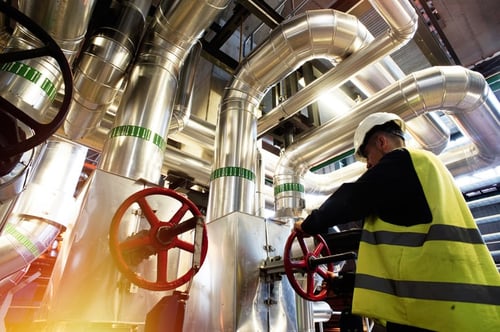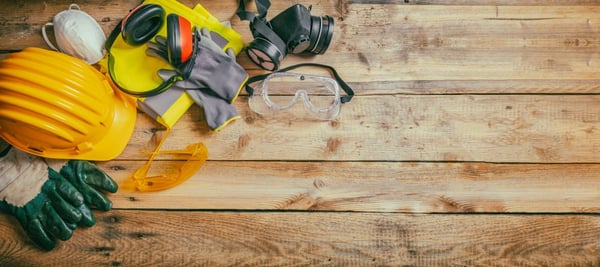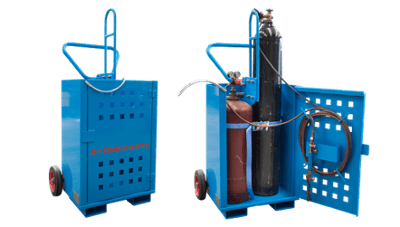The primary reason for investigating any workplace incident is to understand why the incident happened — and then introduce measures to prevent it from happening again. To get a better understanding of the causes of an incident, many WHS professionals use causation models during the investigation process. This blog takes a quick look at the evolution of accident causation models and offers a simple framework to apply to your next incident investigation (particularly if hazardous chemicals were involved).
What is a causation model and why is it needed?
A causation model is a systematic process to help determine the cause of an accident. The causation model exists to assist the accident investigation, so that causes can be identified and actions can be taken to prevent such incidents from occurring again the future. A causation model may be utilised in any type of accident, however, they are particularly useful when dealing with incidents involving hazardous chemicals and dangerous goods.
There are 3 key types of causation models including simple linear models, complex linear models and complex non-linear models. How you decide to investigate and document your HAZCHEM incident depends on how serious the accident is and how much information your team will need to determine the causes.
REMEMBER: You must report an accident to your WHS regulator if it’s a serious health or safety incident. These are recognised as ‘notifiable incidents’, which may include accidents such as large chemical spills or toxic gas inhalation causing a severe health effect.
How different types of accident causation models operate
Since the early 1930s, Occupational Safety Professionals have developed different types of accident causation models to gain greater insight into the factors that contribute to dangerous incidents.

An accident causation model can assist with your HAZCHEM investigation.
They have evolved through these three stages.
1. Simple sequential linear accident causation models
The earliest incident causation models assumed that a series of events occur in a linear sequence — and this sequence is the ultimate cause of the incident.
In this incident causation model, each step in the sequence is dependent on the other (a bit like dominos falling). Therefore, if you could eliminate any fault within the sequence, the incident could have been prevented. The factors of the incident causation model would include social environment, mistakes made by the person, unsafe acts or hazards, accident and injury.
When any of the factors are triggered, the domino effect creates a knock-down effect that leads to the accident and injury.
For example, this is a basic accident causation model example that could easily happen in a workplace with gas cylinders:
1. Worker is moving a gas bottle on a trolley
2. There is no safety strap in place
3. Gas bottle falls off the trolley
4. Gas bottle explodes
5. Worker is killed
From the example above, a simple linear model would assume that fixing the strap on the gas bottle trolley would prevent further incidents.
2. Complex linear incident causation models
The complex linear causation models focus on the idea that accidents happen in a linear sequence, where one factor leads to another. This chain of events between multiple factors is generally noted left to right in the model.
These complex linear accident causation models attributes the cause of an incident to a complex series of events. There is still a linear sequence in place, but multiple events are included in the sequence.
For example, a complex linear accident causation model may include:
1. Worker is moving a gas bottle on a trolley
2. There is no safety strap in place
3. [Worker distracted by nearby forklifts] Gas bottle falls off the trolley [trolley wheel jams]
4. Gas bottle explodes
5. Worker is killed
Simple errors or equipment malfunctions can lead to an accident and injury in the workplace.
Referring again to our example, the complex linear model acknowledges that other factors contributed to the incident, but still focuses on resolving the problem by removing faults from the sequence — ie, getting the trolley fixed or purchasing a compliant gas trolley with cylinder restraints.
3. Complex non-linear accident causation models
Most causation models used today recognise that dangerous incidents are the result of a combination of factors (sometimes seemingly unrelated). Complex non-linear accident causation models were introduced in the early 2000s to rectify some issues with linear accident models.
These non-linear models focus on multiple interacting factors. This model considers mutually interacting variables that could create the incident. By identifying and understanding these interacting factors, you can then work to prevent further accidents in the future.
For example:
1. [there is no system of equipment inspections, routine maintenance, and pre-operational checks]
2. Worker is moving a gas bottle on a trolley
3. There is no safety strap in place [same worker has been using a trolley which hasn’t had a strap for more than a month]
4. [Worker distracted by nearby forklifts] Gas bottle falls off the trolley [debris on floor] [trolley wheel jams]
5. Gas bottle explodes
6. Worker is killed
In the example above, the complex non-linear model looks at a whole range of factors that contributed to the incident.
In the next section of our post, we’ll look at a simple model which assigns causal factors into logical groups.
Simple causation model: assigning factors into groups
Here at Storemasta, we suggest using a simple model which assigns individual causation factors into 5 distinct groups:
1. Task
2. Material
3. Environment
4. Personnel
5. Management
Let’s look more closely at each of the five groups:
1. TASK (examine the work procedures that were being carried out the time of the incident)
Questions to ask. Had a safe work method been issued and was it being followed? Was the work procedure suited to the task and equipment?
2. MATERIAL (examine the machinery, tools, equipment, and substances being used)
Questions to ask. Were chemicals being used and stored according to safety data sheets? Did a chemical container break? Did a machine malfunction? Did PPE fail? Did an obstruction cause a worker to fall? Were all safety signs in place?

When looking at material in your accident causation model, you can consider tools, equipment, PPE and safety signage.
3. ENVIRONMENT (evaluate the prevailing environmental conditions)
Questions to ask. Was the weather unseasonably hot or cold? Were there heavy winds? Was production schedule higher than normal? Were hazardous fumes, dusts, or gases present? Were housekeeping standards poor?
4. PERSONNEL (evaluate the physical condition and mental state of the worker)
Questions to ask. Were any workers affected by prescription medication? Was the worker stressed or fatigued? Did a worker faint or have an allergic reaction?
5. MANAGEMENT (evaluate the impact of management)
Questions to ask. Were safety audits and inspections regularly conducted? Had workers been trained to understand chemical hazards? Were safe working procedures enforced? Have hazard control measures been implemented? Is there adequate supervision for workers?
Simple causation model in practice
During a real investigation you systematically consider possible causes from each group. To demonstrate we’ll use the same example of the worker and the gas bottle.
- Task - the gas cylinder was strapped in by the worker using the trolley. The worker did not check the integrity of the strap before moving the trolley. There was no procedure in place for this to happen.
- Material - the cylinder trolley had no safety strap. The trolley had not been inspected for several months. On closer inspection a build-up of debris had caused the wheel to jam.
- Environment - there were a lot of forklifts operating in the area and the worker had to stop several times to let them pass. Housekeeping was at a low standard and a lot of refuse and debris was lying around.
- Personnel - the worker had just returned from sick leave and was not at their usual level of fitness. They were observed to be sweating and breathing heavily as they moved the cylinder.
- Management - there was no established procedure for pre-operational equipment inspections. Supervisors were not enforcing housekeeping policies.
Causation models are a useful tool when carrying out an investigation and there are many established causation models if you are interested in creating your own incident investigation methodology.
Accident causation models to improve your safety
As we’ve highlighted in this post, determining the cause of a workplace incident involving hazardous chemicals can be a complex process. To help you improve safety in your own operations, we recommend downloading our easy-to-understand eBook. Key Steps in a HAZCHEM Incident Investigation provides a detailed framework and application guide, to assist you with establishing the cause of an accident. Get your copy for free today.
Joining the team as a Dangerous Goods Storage Consultant, Melissa Hampton became Storemasta's Marketing Manager in late 2021. With extensive knowledge and experience in chemical compliance, Melissa is responsible for leading the Marketing team and helping shape their marketing strategy. In her spare time, you can find Melissa hiking, swimming and enjoying the great outdoors in beautiful north-west Tasmania.

